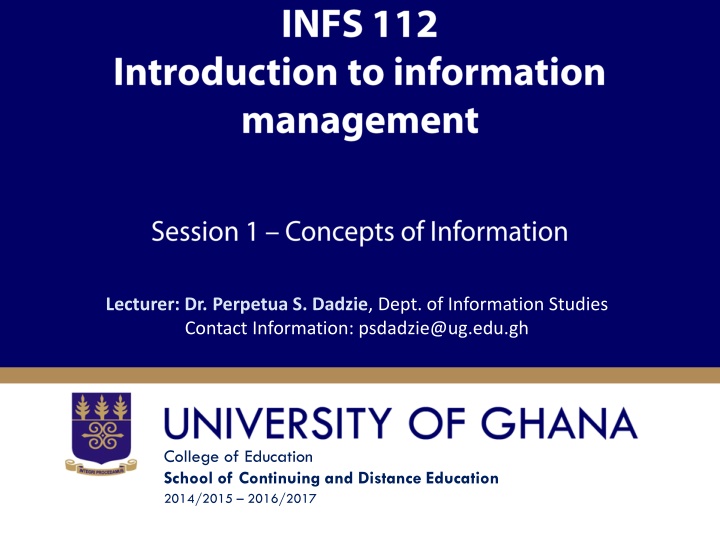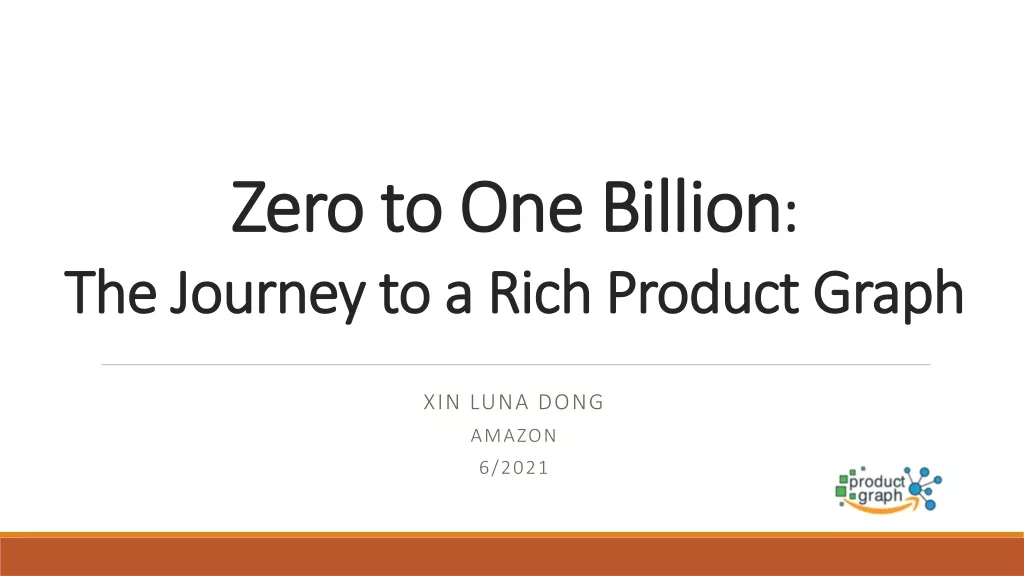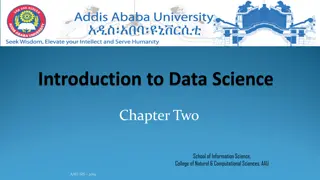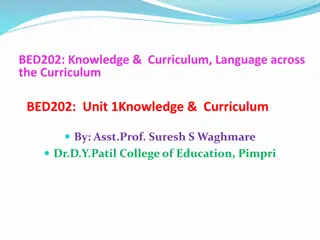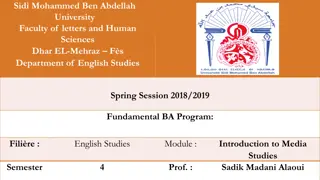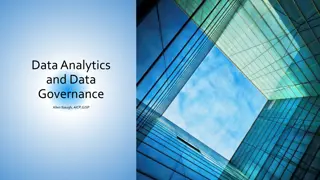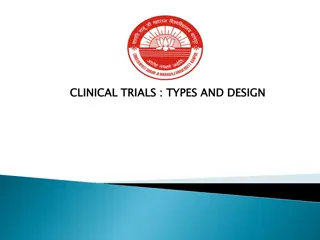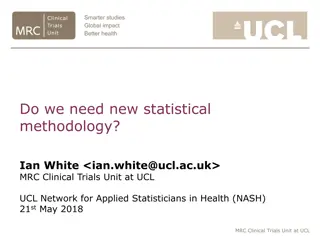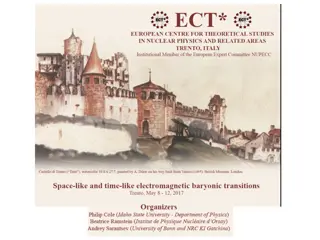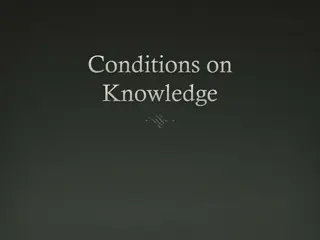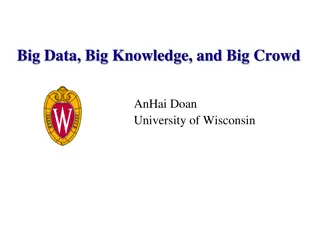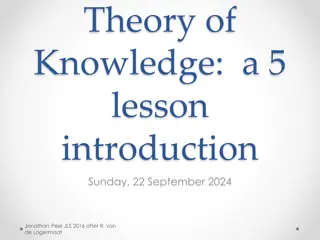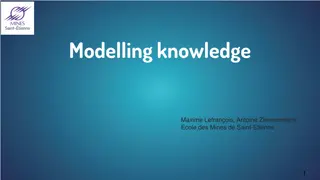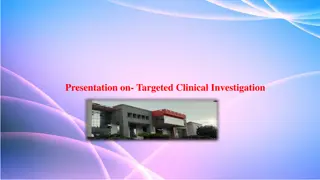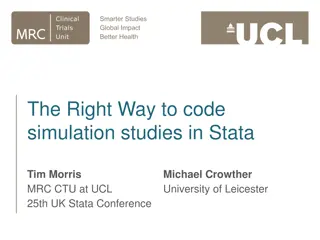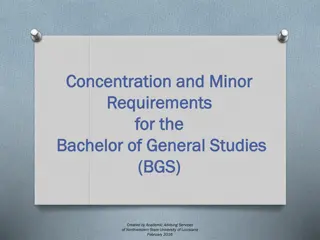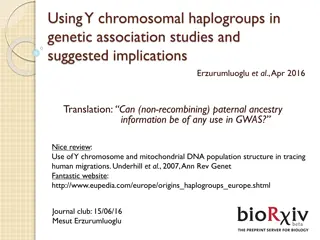Data, Information, and Knowledge in Information Studies
Data, information, and knowledge play vital roles in our lives and are essential in information studies. Dr. Perpetua Dadzie explores the definitions and distinctions among data, information, and knowledge, emphasizing the transformation process that turns raw data into meaningful information. The session covers the basics of data, examples illustrating the importance of context in data interpretation, and the significance of organizing data to derive information. Additionally, a reading list is provided for further exploration of information and knowledge management principles.
Download Presentation

Please find below an Image/Link to download the presentation.
The content on the website is provided AS IS for your information and personal use only. It may not be sold, licensed, or shared on other websites without obtaining consent from the author.If you encounter any issues during the download, it is possible that the publisher has removed the file from their server.
You are allowed to download the files provided on this website for personal or commercial use, subject to the condition that they are used lawfully. All files are the property of their respective owners.
The content on the website is provided AS IS for your information and personal use only. It may not be sold, licensed, or shared on other websites without obtaining consent from the author.
E N D
Presentation Transcript
Lecturer: Dr. Perpetua S. Dadzie, Dept. of Information Studies Contact Information: psdadzie@ug.edu.gh College of Education School of Continuing and Distance Education 2014/2015 2016/2017
Session Overview At the end of the session, the student will be able to: Define and differentiate among data, information and knowledge Explain how and why data, information and knowledge are essential in our daily lives Understand the knowledge pyramid Slide 2 Dr. Perpetua Dadzie, Dept of Information Studies
Session Outline The key topics to be covered in the session are as follows: Topic One - What is data? Topic Two - What is information? Topic Three What is knowledge? Topic Four Knowledge Pyramid Slide 3 Dr. Perpetua Dadzie, Dept of Information Studies
Reading List Elearn (2009). Information and Knowledge Management. Revised Edition. Burlington, MA: Elsevier Ltd. pp. 2-6 (e- book) Debons, A. (2008). Information Science 101. Lanham, Maryland: The Scarecrow Press Inc. pp. 3-7 Palmer, S. & Weaver, M. (1998). Information Management. Oxford: Butterworth Heinemann. pp 22-26 Slide 4 Dr. Perpetua Dadzie, Dept of Information Studies
Topic One WHAT IS DATA? Slide 5 Dr. Perpetua Dadzie, Dept of Information Studies
What is Data? Data are raw facts and figures that on their own have no meaning. These can be any alphanumeric characters i.e. text, numbers, symbols. For example: 12A4GH7; 17, 25, Data simply exists and has no significance beyond its existence (in and of itself). It can exist in any form, usable or not. It does not have meaning of itself. Data is comprised of the basic, unrefined, and generally unfiltered information Data must be organized to become information. Slide 6 Dr. Perpetua Dadzie, Dept of Information Studies
What is Data? (2) Data Examples Yes, Yes, No, Yes, No, Yes, No, Yes 42, 63, 96, 74, 56, 86 111192, 111234 GH 80, GH 102, GH 200, GH 150 Can you interpret the meaning of the above? None of the above data sets have any meaning until they are given a CONTEXT and PROCESSED into a useable form Slide 7 Dr. Perpetua Dadzie, Dept of Information Studies
What is Data? (3) Purpose of Data to record activities or situations, to attempt to capture the true picture or real event. Therefore, all data are historical, unless used for illustration purposes, such as forecasting. Slide 8 Dr. Perpetua Dadzie, Dept of Information Studies
Topic Two WHAT IS INFORMATION? Slide 9 Dr. Perpetua Dadzie, Dept of Information Studies
What is Information? Is this information: Treuliodd y rhif cwsmer bron i dri chant o ddoleri mewn un pryniant - gwerthiant mwyaf y mis diwethaf! - Why yes/no? Is this information: This is a regular patron who borrows at least six books at a time and has never missed a deadline in returning his books. - Why yes/no? Dr. Perpetua Dadzie, Dept of Information Studies Slide 10
What is Information (2) Information collection of facts organized in such a way that they have additional value beyond the value of the facts themselves Data that has been processed within a context to give it meaning Data that has been processed into a form that gives it meaning A subset of data, only including those data that possess context, relevance and purpose Manipulation of raw data Data that are processed to be useful; provides answers to "who", "what", "where", and "when" questions Slide 11 Dr. Perpetua Dadzie, Dept of Information Studies
What is Information (3) Information by itself is only of use if it is: the right information (fit for the purpose) at the right time in the right format at the right price Slide 12 Dr. Perpetua Dadzie, Dept of Information Studies
What is Information (4) Purpose of Information To understand what the organization as a whole is doing as well as understand what is happening in your own unit or department To be aware of the wider industry developments that may impact on your library or archives set up To solve day-to-day problems and to help with long-term planning To help avoid reinventing the wheel To be aware of different practices which are bringing new ideas and facilitating change Slide 13 Dr. Perpetua Dadzie, Dept of Information Studies
Topic Three WHAT IS KNOWLEDGE? Slide 14 Dr. Perpetua Dadzie, Dept of Information Studies
What is Knowledge? Knowledge is appropriate collection of information, such that its intent is to be useful. understanding of rules needed to interpret information application of data and information; answers "how" questions a mix of contextual information, experiences, rules, and values. Slide 15 Dr. Perpetua Dadzie, Dept of Information Studies
What is Knowledge? (2) Note : Tremendous amount of information that is generated is only useful if it can be applied to create knowledge within the organisation. Two types of knowledge Tacit/hidden knowledge - Within the organisation there are certain people who hold specific knowledge or have the 'know how Slide 16 Dr. Perpetua Dadzie, Dept of Information Studies
What is Knowledge? (3) Tacit For ex. -- "I did something very similar to that last year and this happened .. Tacit knowledge "is personal, context-specific and hard to formalize and communicate. A [knowledge] developed and internalized by the knower over a long period of time . . . Chapter 12 17
What is Knowledge? (4) Tacit . incorporates so much accrued and embedded learning that its rules may be impossible to separate from how an individual acts. knowing how Eg. The knowledge that you use when driving a car Chapter 12 18
What is Knowledge? (5) Explicit/formal knowledge that can be easily collected, organized and transferred through digital means. A theory of the world, conceived of as a set of all of the conceptual entities describing classes of objects, relationships, processes, and behavioral norms. Often referred to as knowing that , or declarative knowledge. Eg. the knowledge available from a driving manual or the Highway Code Chapter 12 19
What is Knowledge? (6) Explicit/formal This is knowledge that has been captured and used to develop policies and operating procedures for example. Chapter 12 20
The Knowledge Pyramid Slide 21 Dr. Perpetua Dadzie, Dept of Information Studies
Video What is the difference between data, information and knowledge? <iframe width="560" height="315" src="https://www.youtube.com/embed/mUgEgkV16 Bw" frameborder="0" allowfullscreen></iframe> Slide 22 Dr. Perpetua Dadzie, Dept of Information Studies
Activity Using the Knowledge pyramid as a guide, list five items of data, information and knowledge. Summarize what you use each item for your purpose Note how you add value to each item to create information or knowledge Who is involved in this process? Slide 23 Dr. Perpetua Dadzie, Dept of Information Studies
